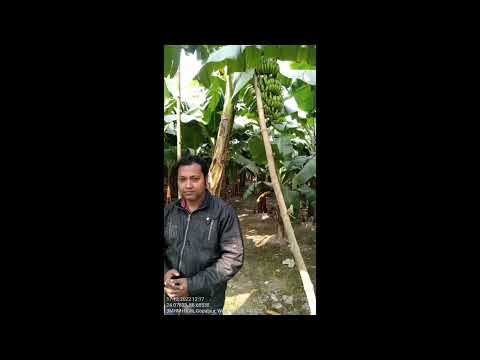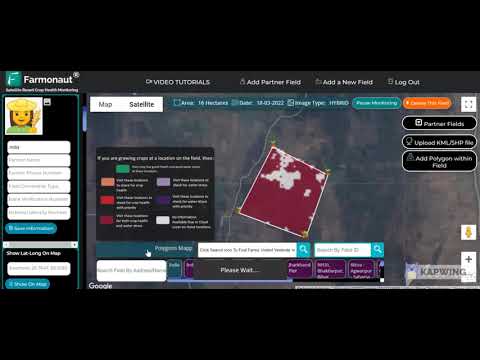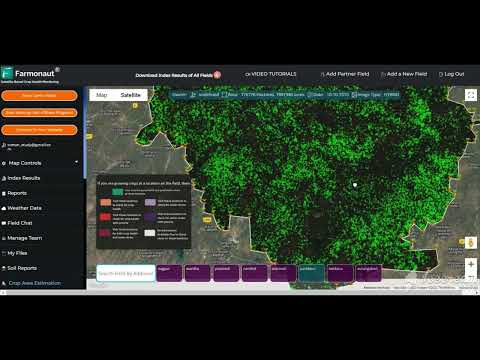Civilian Conservation Corps: 7 Powerful Impacts on New York’s Parks
Discover how Civilian Conservation Corps camps drove New Deal conservation projects, planting trees and building public lands across New York’s mountain areas. In this comprehensive guide, we explore the seven most powerful impacts these historic camps delivered to the state’s parks — legacy projects that transformed New York’s landscapes and shaped America’s commitment to sustainability.
During the 1930s, civilian employees at sites like Fort Drum were engaged not just in supporting military readiness, but as a vital part of Great Depression relief programs. The Civilian Conservation Corps (CCC) — often referred to as “Roosevelt’s Tree Army” — was born from New Deal environmental priorities and would leave an indelible mark on New York’s mountain parks, forests, and recreational lands.
Table of Contents
- Introduction: Civilian Conservation Corps Camps & The New Deal Conservation Projects
- CCC in New York: Context and Origins
- The 7 Powerful Impacts of Civilian Conservation Corps Camps
- 1. Transforming New York’s Mountain Forests: Tree Planting Legacy
- 2. Building Public Lands: Parks and Recreation Infrastructure
- 3. Restoring Streams and Dams for Ecosystem and Community Benefit
- 4. Wildlife Habitat Preservation and Forestry Innovation
- 5. Youth Employment During the Great Depression: Nationwide Opportunity
- 6. Strengthening State and National Park Development Across New York
- 7. Long-Term Sustainability and the Legacy of Conservation Corps in America
- CCC Impact Overview Table
- The New Era of Conservation and Smart Agriculture: Farmonaut
- Conclusion: Civilian Conservation Corps in New York
- FAQ: Civilian Conservation Corps and Conservation in New York
Introduction: Civilian Conservation Corps Camps & The New Deal Conservation Projects
When President Franklin D. Roosevelt signed legislation establishing the Civilian Conservation Corps in 1933, he unleashed a wave of nationwide conservation projects intended to heal not only the land but also the economy. The CCC was groundbreaking — a federally funded workforce program aiming to restore and develop public lands across the country while battling soaring unemployment during the Great Depression.
We now know the CCC’s impact was lasting. The camps that dotted New York’s mountain areas and forests didn’t just offer relief through honest work — they set in motion the largest coordinated public lands conservation efforts in the state’s history. Their projects in afforestation, recreation development, wildlife restoration, and infrastructure building underpin the benefits we enjoy in state and national parks today.
In this deep dive, we’ll explore how these historic camps and projects changed the face of New York — and how their legacy informs contemporary sustainability initiatives, such as those advanced by Farmonaut, which brings satellite-based solutions to precision agriculture and environmental stewardship.
CCC in New York: Context and Origins
Our state played a critical role in shaping national conservation. New York boasted the largest share of CCC activity nationwide, with over 208 camps from 1933 to 1942. Many were located in the North Country, particularly in mountain regions and key public lands. These facilities formed the backbone for New Deal conservation projects, driving forward tree planting, infrastructure, and resource management efforts.
At Pine Camp (now Fort Drum), the CCC not only helped plant hundreds of acres of pine trees but also constructed a dam on Buck Creek, built recreational areas, and improved the surrounding environment. Workers at other sites built golf courses near Green Lakes, reconstructed dams near Tupper Lake, and created popular swimming beaches and public campsites at Selkirk Shores State Park.
The CCC’s rigorous recruiting, certification, and physical fitness examination requirements ensured that the men employed for these demanding tasks were prepared, instilling discipline and a sense of purpose. The involvement of the U.S. Army, which ran many of the camps, contributed to their legendary efficiency. The program’s focus was sustainability, resource conservation, and nation-building.
The 7 Powerful Impacts of Civilian Conservation Corps Camps
1. Transforming New York’s Mountain Forests: Tree Planting Legacy
Arguably the most iconic CCC contribution was planting pine trees in New York. Known as “Roosevelt’s Tree Army,” these young men planted millions of trees across the state to combat deforestation and soil loss. In the areas surrounding Fort Drum, acres of pine were planted, helping to create a more resilient ecosystem.
This wasn’t just about increasing timber resources. These tree planting efforts restored natural resources after years of overuse, helping stabilize soil in the mountain regions and creating a habitat for wildlife. The ripple effects still benefit New York’s climate resilience and biodiversity today, testifying to the lasting legacy of conservation corps in America.
- Over 1.3 billion trees were planted nationwide, with New York’s mountain areas receiving extensive reforestation.
- Key locations: Pine Camp (Fort Drum), Catskill and Adirondack mountain parks, North Country forests
- Restored habitats for native birds, mammals, and insects; reduced erosion and improved water quality.
- Created the backbone for forest restoration projects in the 1930s, the benefits of which help mitigate climate change today.
2. Building Public Lands: Parks and Recreation Infrastructure
The CCC reshaped public lands by constructing essential infrastructure throughout New York’s parks. Workers built trails, roads, and recreational facilities to increase public access to mountain areas and forests, setting the groundwork for modern outdoor recreation.
- Created miles of trails that encourage safe hiking, biking, riding, and nature enjoyment.
- Constructed visitor centers, recreation spaces, golf courses (notably at Green Lakes), swimming beaches, and public campsites.
- Restored and developed state and national park amenities that are staples for New Yorkers and tourists alike.
- Improved and built roads, including main stretches that connect parks to communities (e.g., connecting Wheeler-Sack Army Airfield to local areas).
These advancements vastly increased the usability and inclusivity of our public lands, ensuring New Yorkers’ access to nature for future generations.
Did you know? The CCC built or improved hundreds of miles of trails and roads during the New Deal, permanently enhancing our park infrastructure and trail systems.
3. Restoring Streams and Dams for Ecosystem and Community Benefit
Flood prevention and water resource management were pivotal CCC missions. Across New York’s parks and mountain areas, enrollees built or restored dams, managed creeks, and stabilized riverbanks. These efforts supported both ecosystem integrity and community needs.
- Reconstructed dams (such as at Buck Creek, Tupper Lake) to control flooding and ensure a safer environment for residents.
- Improved water quality, managed inland fisheries, and provided robust water sources for recreation and wildlife.
- Helped construct and maintain swimming beaches and lakeside facilities for public use at sites like Selkirk Shores State Park and Green Lakes.
- Boosted tourism and local economies by making these areas accessible and safe for public enjoyment.
4. Wildlife Habitat Preservation and Forestry Innovation
The CCC’s conservation work extended to safeguarding wildlife habitats and pioneering forestry practices. By arresting soil wastage and promoting sustainable logging, these projects advanced ecological science and set the standards for future natural resource management in the state.
- Protected vulnerable species and revitalized habitats using modern forestry science and conservation techniques.
- Stopped destructive erosion and soil depletion in mountain regions, ensuring nutrients would support diverse flora and fauna.
- Created firebreaks and managed forests to reduce wildfire risk, an urgent priority in New York’s vast woodlands.
- Facilitated successful reintroductions of native wildlife through healthy, supportive environments.
Today, environmental monitoring and habitat preservation are central to Farmonaut’s Carbon Footprinting, a tool that equips modern farmers and land managers with real-time data to help track and reduce greenhouse gas emissions and protect sensitive ecosystems.
5. Youth Employment During the Great Depression: Nationwide Opportunity
Youth employment during the Great Depression was a primary goal of the CCC. With 1.5 million men enrolled in the program across the country by 1936, many from New York’s urban and rural communities, the CCC offered more than a wage — it provided job training, life skills, physical fitness, and a sense of civic purpose.
- CCC enrollees were selected after a rigorous certification and examination process at Department of Labor recruiting stations.
- Physical and practical skills developed in the camps, from forestry to dam construction, improved long-term career prospects.
- Instilled a service-oriented mindset; many went on to become community leaders and military officers in the 10th Mountain Division and elsewhere.
- Promoted social mobility for millions, demonstrating the power of transformative relief programs.
Farmonaut’s satellite-based Fleet Management solutions echo this spirit, enabling organizations to optimize operations and workforce resources efficiently across large farming or restoration projects.
6. Strengthening State and National Park Development Across New York
New York owes its world-class park system to the foundational work carried out by CCC camps. From the Catskills to the Adirondacks, and especially throughout Fort Drum’s vicinity, CCC teams shaped state and national parks into premier outdoor destinations.
- Developed or renovated dozens of New York parks, improving visitor experiences through better facilities and natural beauty.
- Boosted tourism and recreation revenues, generating ripple effects that benefited local economies for decades.
- Created recreation areas, lakes, and campsites throughout North Country mountain areas and lakeside parks.
- The roads, trails, and airfield connections constructed during the CCC era still serve as main arteries today (example: Munns Corner Road, Wheeler-Sack Army Airfield vicinity).
The ongoing Large Scale Farm Management tools by Farmonaut reflect the CCC’s legacy, enabling policy makers and managers to direct, monitor, and report on conservation initiatives at scale.
7. Long-Term Sustainability and the Legacy of Conservation Corps in America
Perhaps the CCC’s most profound impact is its enduring model of long-term sustainability. Through public lands conservation efforts, the Corps demonstrated that active stewardship, smart infrastructure, and engaged citizens are essential to the health of our natural resources.
- Inspired future conservation corps and environmental service initiatives across America.
- Laid groundwork for environmental education, climate resilience projects, and modern conservation science.
- Provided living proof that restorative investment in land, water, and forests yields dividends for generations.
- Championed the link between environmental work and public health, community leadership, and resiliency against crisis.
Today, blockchain-based traceability and satellite monitoring, such as those offered by Farmonaut’s Product Traceability, build on the CCC’s legacy — ensuring that sustainability and conservation remain priorities for new generations.
CCC Impact Overview Table
To appreciate the sheer scope of the Civilian Conservation Corps’ contributions to New York, below is an at-a-glance summary of their critical efforts in park and mountain areas. The table emphasizes the estimated scale of their work, supporting both the blog’s sustainability theme and your understanding of public lands development.
| Project Type | Estimated Number Completed | Location | Year Undertaken |
|---|---|---|---|
| Tree Planting (mainly Pine) | Over 20 million trees | Pine Camp (Fort Drum), Catskills, Adirondacks, North Country | 1933–1942 |
| Trail Construction & Road Building | 300+ miles of trails, 50+ miles of roads | Green Lakes State Park, Selkirk Shores, Fort Drum vicinity | 1933–1940 |
| Dam & Stream Restoration | 12 major dams; dozens of creeks improved | Tupper Lake, Buck Creek, Selkirk Shores | 1934–1939 |
| Recreation Facilities (Beaches, Golf Courses) | 10+ key facilities | Green Lakes, Selkirk Shores, Fort Drum area | 1935–1941 |
| Wildlife Habitat Restoration | 5,000+ acres improved | Adirondacks, Catskills, North Country | 1934–1942 |
| Flood Control Projects | 20+ communities protected | Mohawk Valley, Tupper Lake, Buck Creek | 1933–1939 |
The New Era of Conservation and Smart Agriculture: Farmonaut
As we celebrate the legacy of the Civilian Conservation Corps, it’s clear that technology is key to continuing their mission. Enter Farmonaut: a pioneering agricultural technology company transforming conservation and farming for the modern era. Farmonaut leverages satellite imagery, AI, machine learning, and blockchain to help farmers, agribusinesses, and public agencies advance sustainability, resource management, and food security worldwide.
- Crop Monitoring: Real-time satellite-based crop health monitoring, including vegetation (NDVI) and soil moisture.
- AI-Powered Advisory: Personalized, data-driven advice (Jeevn AI) for improving crop productivity and efficiency.
- Traceability & Transparency: Blockchain-based traceability (Product Traceability) delivers secure, trusted farm-to-consumer information — vital for sustainability and consumer trust.
- Fleet & Resource Management: Efficient logistics and machinery management (Fleet Management) optimize operational costs for large-scale projects.
- Environmental Sustainability: Carbon footprint tracking (Carbon Footprinting) helps businesses and agencies reduce environmental impact and meet modern compliance standards.
- Access to Financing: Streamlined crop loan and insurance verification (Crop Loan & Insurance) assists farmers and lenders with risk reduction and improved access to funds.
- Scalable Management: Large operational units benefit from the (Large Scale Farm Management) platform, enabling precision across thousands of hectares.
By democratizing remote sensing, blockchain traceability, and AI analytics, Farmonaut enables today’s environmental stewards — from park managers to mountain reforestation leaders and farmers — to advance sustainability further than ever before.
For developers and organizations: Access Farmonaut’s satellite and weather data API or explore the Developer Documentation to integrate these advanced capabilities into your own precision agriculture systems.
Conclusion: Civilian Conservation Corps in New York
The transformative work of the Civilian Conservation Corps camps throughout New York’s mountain areas — from planting pine trees to constructing public facilities and preserving natural resources — created lasting benefits for both people and the environment. Through New Deal conservation projects, the CCC embodied the spirit of service, resilience, and sustainability.
The legacy of these historic camps is evident in every mile of trail, every stand of restored pine, every thriving park and recreation area in the state. Modern conservationists, environmental managers, and technology innovators continue to build on this foundation. With advanced tools like Farmonaut’s satellite-based farm and landscape management, we are empowered to monitor, restore, and safeguard our natural assets at unprecedented scale, echoing the mission of America’s first “Tree Army.”
Together, let’s continue this tradition — protecting public lands, fostering community, and driving the next era of sustainability in New York and beyond.
FAQ: Civilian Conservation Corps and Conservation in New York
What was the Civilian Conservation Corps and how did it start?
The CCC was a federal work relief program established in 1933 as a response to the Great Depression. It was designed to provide jobs to young, unemployed men by engaging them in conservation work on public lands, including parks, forests, and mountain areas across the country.
What were the key impacts of Civilian Conservation Corps camps in New York?
CCC camps in New York led to massive tree planting (mainly pine), the building of trails and roads, restoration of dams and streams, wildlife habitat enhancement, and park development. These New Deal conservation projects remain integral to New York’s sustainability and recreation infrastructure today.
How did CCC projects benefit local communities?
By supporting flood control, recreation, and community safety, the CCC improved quality of life, generated tourism, and boosted local economies. The employment opportunities helped thousands climb out of poverty while learning new skills and developing a sense of civic pride.
How does Farmonaut’s approach relate to the legacy of the CCC?
Farmonaut extends the CCC’s tradition of environmental stewardship by providing remote sensing, AI analytics, and sustainability tracking. These tools enable today’s conservationists and farmers to monitor landscapes, manage resources wisely, and make data-driven decisions — scaling conservation to meet 21st-century challenges.
Where can I download or access Farmonaut’s technology?
You can access Farmonaut solutions via the Web App, as well as dedicated Android and iOS apps.
What types of users benefit from Farmonaut services?
Individual farmers, agribusinesses, government agencies, corporate clients, and NGOs benefit from Farmonaut’s platform and API. Use cases include real-time crop health monitoring, fleet and resource optimization, blockchain-based product traceability, environmental compliance, and more.
Explore sustainable innovation for your farm, park, or land — try Farmonaut today.








